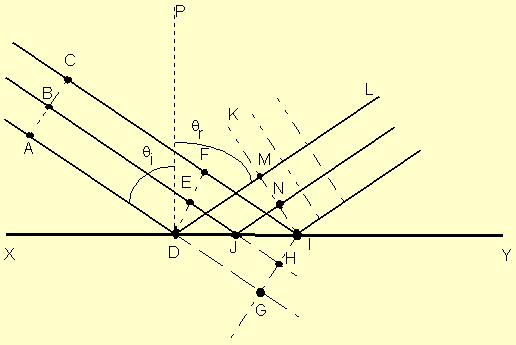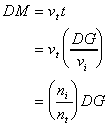The Huygens’s principle is based on the imagination that each point of the propagating disturbances is capable to originate the new pulses, which are also contributing to the disturbances at the later instances. The laws of geometrical optics can be implied to show his model of light propagation. This law states that all the points on the surface of wave disturbances can be regarded as secondary sources of the spherical waves which are progressing with the speed of light. It is important to note that the wavefront is the tangent to each of the wavelets at a single point. According to this law, the remainder of the wavelets is disregarded while applying this principle.
Law of Reflection from Huygens’ Principle

The above figure is illustrating the Huygens’ construction of a parallel and narrow beam of light for proving the law of reflection. There must be some modification in this law for the accommodation of the case, in which the wavefront encounters the plane interface at an angle. Here the angle of incident rays is perpendicular to the PD. Points along the wavefront are not simultaneously arriving at the interface so the allowance is made for constructing differences. The intrusion of the reflecting surfaces means that during the same interval there is progressing of CF and BE. This construction is indicating the equivalence between the angle of reflection and incidence.
Law of Refraction using Huygens’ Principle

Here, it is essential to consider a different speed of light in the lower and upper media. The points F, D, and E on the incident wavefront are arriving at the points I, J and D, on the plane interface, but their arrival time is different. When the refracting surface is absent, then there is the formation of wavefront GI at the instant ray (DF) is also reaching at the I. During the passing of ray from F to I in the time t, the ray AD is also entering the lower medium, but at the different speed. The radius given as DM can be shown by the following expression

In the same way, a wavelet of radius JH is also drawn and it is centered at J. The new wavefront that is KI is also including the point I of the interface and it is tangent to two wavelets at the point N and M. This is also in accordance to the Huygens principle.